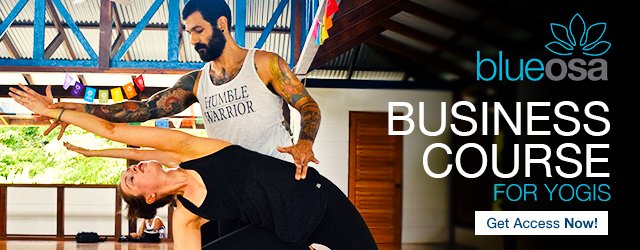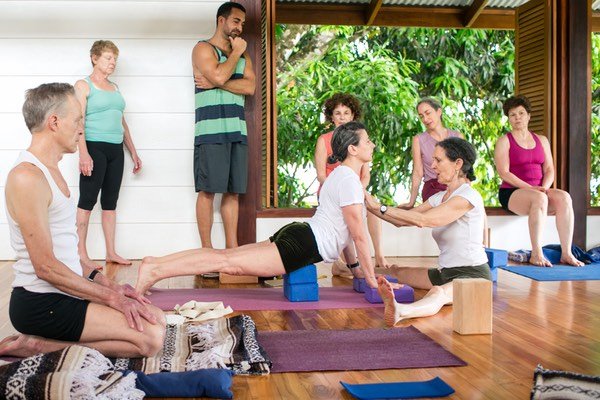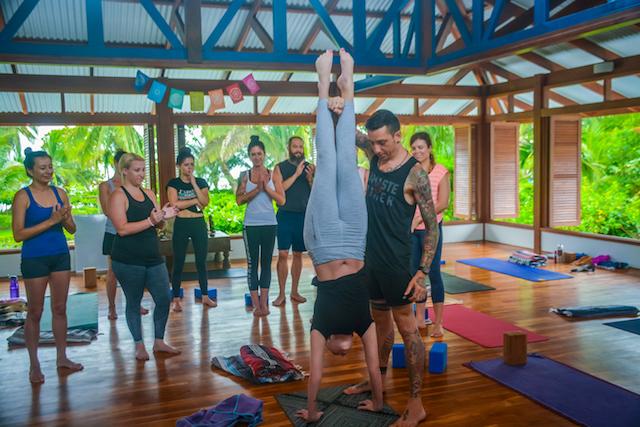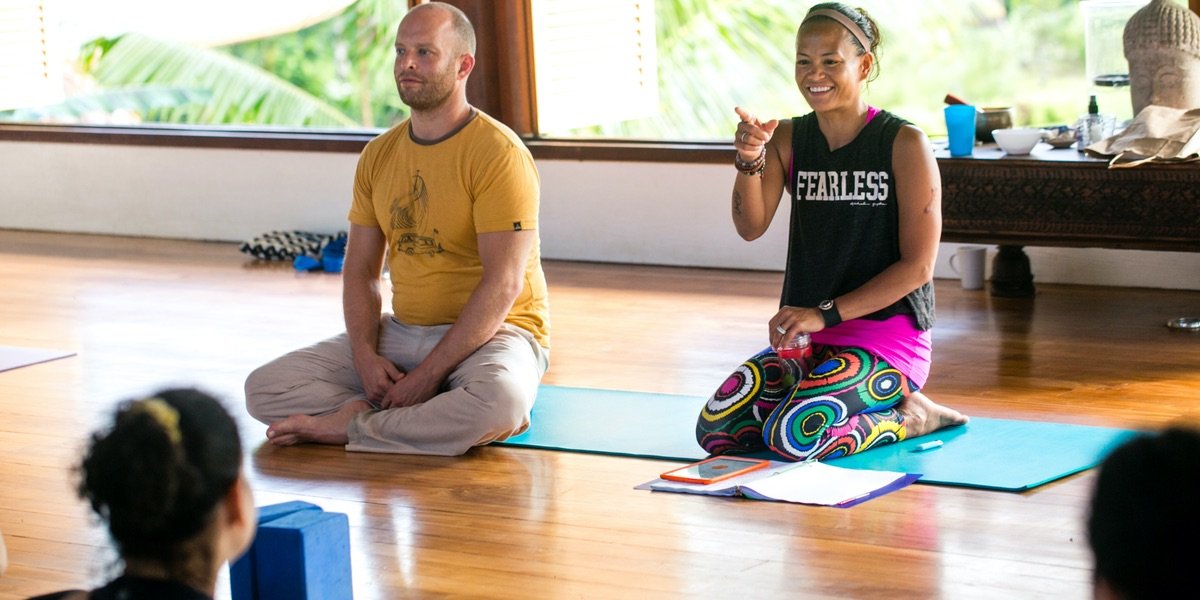
The road to become a yoga instructor is far from smooth. Although filled with opportunities for self-discovery and personal growth, becoming a yoga teacher takes impressive amounts of commitment and perseverance. Before you jump into teacher training, it’s essential to make sure that you have a deep understanding of what becoming a yoga teacher truly involves.
To be a successful instructor, you’ll need the right training, business savvy and a strong belief in yourself. In order to stand out from the crowd, you’ll need to bring your authentic self into your classes and teach in a way that only you can. Turning your passion into a financially viable job is never easy. However, with a clear focus and determination, there’s nothing to stop you from making it happen.
What To Expect As A Yoga Instructor
Although life as a yoga teacher can be a beautiful adventure, it’s not all Instagram-worthy poses, carefree beach days, and cold-pressed juices. The industry is booming, with more people embracing yoga than ever before. Yet, the growing number of certified yoga teachers means that jobs aren’t always easy to come by. However, with dedication, creativity, and a whole-hearted approach, earning a full-time salary is achievable.
Salary Expectations
New Yoga Instructors
“So, how much does a yoga teacher make?” It’s a common question, but the answer will heavily depend on your experience and location. When starting out, a new yoga teacher in the U.S can typically expect to earn between $25 and $35 per class at a small studio or gym. Meanwhile, you might receive up to $45 per class at a larger studio. However, studios sometimes pay teachers according to how popular their classes are. Look for studios operating a per-mat bonus system, which means you’ll earn an extra $1-3 per student after the minimum number has been reached.
Established Yoga Instructors
On average, established yoga teachers can expect to earn between $50 and $75 per class. If you’re a popular teacher with a large following, you might even be able to negotiate $100 per class. Provided you teach a full schedule of classes, this means that it’s possible to earn a full-time salary through yoga alone. However, it’s important to realize that teaching 15 or more classes per week can be exhausting. If you want to maintain your passion for yoga, getting creative with your offerings and diversifying your income stream will help you to build a satisfying career.
Private Instruction
Teaching private clients is a great way to boost your earnings as a yoga teacher. For a private yoga class, or a 1:1 session, teachers can earn between $75–$150. However, private sessions require plenty of planning, so don’t underestimate the time involved. Also, if you travel to your private client, always include the costs in your rate. It’s a good idea to sell private classes in packages, rather than on a session by session basis. Selling packages makes it easier to budget and it’ll also encourage your clients to stick with their practice.
Workshops
Running workshops is another effective way to boost your income. To teach workshops, you’ll need the relevant expertise, so get creative and think about your yoga niche. You should also decide on a location, cost, and marketing before you start selling your workshop.
Getting Your First Yoga Job
Once you finish your yoga teacher training, the most important step is to start teaching as soon as possible. Post-training, you’ll (hopefully) be filled with enthusiasm and confidence, making it the perfect time to jump in. Also, the longer you wait, the more difficult it’ll be to remember everything you’ve learned.
As a newly-qualified yoga teacher, getting your first job will be the biggest hurdle. Popular studios are often hesitant to give new teachers their own classes, so ask if you can assist another teacher. It’s a great way to gain experience and as an added bonus, you’ll show your commitment to the studio. You could also look out for job openings at gyms and health clubs, before moving on to yoga studios.
It’s also worth thinking creatively about what you can offer. You could offer to teach classes in your workplace, for example, or run voluntary classes at your local recreation center. Gaining experience is key, so don’t wait too long to get started!
How To Become A Yoga Instructor
Training Requirements
To become a certified yoga instructor, the first step is to complete a 200-hour teacher training course (YTT). This course will be the foundation of your future teaching career, so do lots of research and choose carefully. Enrolling in an immersive 14-day or month-long course is a popular way to complete the 200-hour training.
These courses require you to train and study every day while doing the relevant coursework. Whether you choose a residential or non-residential option, an intensive course has the potential to be life-changing.
You’ll get the chance to immerse yourself in the yogic lifestyle, meet like-minded people, and take your personal practice to the next level.
Not everyone can dedicate a whole month, or even two weeks, to YTT and there are plenty of other options. Depending on where you live, you’ll find courses that run for four months, six months, and even two years. No matter which 200-hour YTT you choose, you can expect to learn the crucial elements of teaching yoga. For example, you’ll learn how to structure a class, the mechanics and physiology of poses, pranayama, and meditation techniques.
Advanced Training
Once you complete a 200-hour program, you’ll be certified to teach, but the learning doesn’t stop there. Various specialized courses exist, which allow yoga teachers to gain expertise in a particular niche. For example, you might want to deepen your knowledge of Yin Yoga or learn how to teach children and adolescents.
For yoga teachers who have completed their 200-hour training and who have been teaching for a while, the 300-hour course is an excellent next step.
At Blue Osa, the 300-hour teacher training allows you to dive deeper into the roots of yoga and can help you to discover your true niche.
Also, once you’ve completed both programs, you’ll be eligible to register with Yoga Alliance as a 500-hour certified teacher.
How to Find the Right Training for You
Yoga teacher training is a significant investment of both time and money. It’s important to do plenty of research to ensure you’re making the right choice. Before you commit to a training course, ask yourself the following questions:
What style of yoga would I like to teach?
When you think about your yoga practice, consider which style resonates the most with you. Do you have a passion for Vinyasa? Or is Ashtanga your thing? Some training schools focus on a strong, flowing yoga practice, while others emphasize slow, restorative movements. Choose the training program that will help you become the best teacher you can be in the style you love.
What’s my budget?
Depending on where you want to train, the cost of YTT can vary significantly. In Costa Rica for example, training programs usually cost less than programs in the U.S and Europe. They also tend to be all-inclusive, so you’ll live and eat on site. However, you’ll need to factor in the cost of travel for training abroad. Some schools also offer payment plans, which is a great option, if you’re not in a position to pay in full upfront.
How much of my time can I invest in training?
Consider how much time you can dedicate to your YTT. If you have a flexible schedule, a month-long program might be a great option. Alternatively, if you work full-time or have a family, a two-week program might suit you better.
Is Yoga Alliance accreditation important to me?
If you’re aiming to teach in yoga studios, check that your training course is Yoga Alliance registered (RYS®). This will allow you to become a Registered Yoga Teacher (RYT®), which many studios now expect.
Tips for Starting a Yoga Business
According to a 2016 report by Yoga Journal, the number of people practicing yoga in the U.S increased from 20 million in 2012 to 37 million in 2016. This means that although it’s highly competitive out there, there are also plenty of opportunities. If you’re dreaming of setting up your own yoga business, here are some tips to help you turn it into a success:
- Draw up a business plan: If you’re thinking about opening your own studio, your first step should be making a business plan. How much working capital you’ll need, the rates you’ll charge, and how many students you’ll need to attract are all crucial factors to consider.
- Create a brand: Whether you’re a freelance teacher or opening a studio, creating a brand is essential. A brand should relate to your personal story, so think about what makes you stand out from other teachers and sell this in your branding. Define your vision and then choose a logo that represents that vision.
- Build a loyal following: Commit to your students and earn their loyalty. Whether it means chatting as you tidy up at the end of class, or focusing on each of them during class, it’s important to establish a personal connection. When people know you and like your classes, they’re more likely to keep coming back.
- Choose your offerings: Unless you’re earning the highest rate per class, group classes are unlikely to pay the bills. This means that you’ll need to offer private classes, workshops, or yoga retreats to boost your earnings. Focus on your niche and come up with a plan.
- Prioritize your own practice: To be the best teacher you can be, you’ll need to prioritize your personal yoga practice. Making time for daily practice in your schedule will allow you to teach from an authentic place.
- Consider creating online yoga classes: Online classes require less initial investment and much lower overheads than running a studio. They have the potential to be very profitable, provided you have a good email list or a large following.
- Network, network, network: In any industry, it’s important to establish a network. Attending training events is a great way to meet other yoga teachers, while industry events can be an easy way to meet relevant brands. Keep some business cards ready and focus on growing your list of contacts.
Are you ready to the step and become a yoga instructor?
The road to becoming a full-time yoga teacher requires serious dedication, but it’s almost impossible to get there without the right training along the way.
Our comprehensive business for yogis course is designed to help you turn your passion into a sustainable career.
Throughout 47 video lessons, we’ll show you how to identify your goals, develop a brand, and understand crucial financial skills. Whether you want to host transformative retreats or earn a living as a full-time instructor, our course will help you create the necessary action plan to get there.








Comments